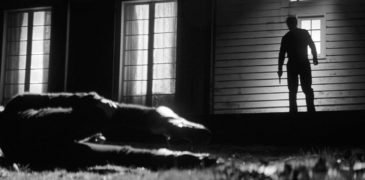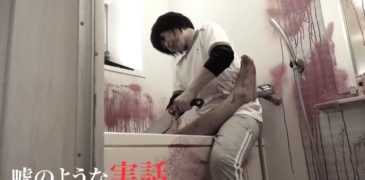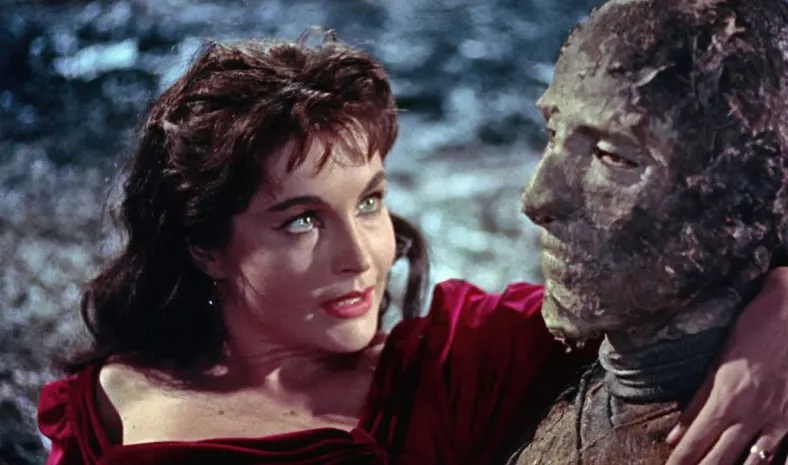
As a horror reviewer, I spend most of my movie time with new and upcoming releases, so I jumped at the chance to review Second Sight Films’ rerelease of 1958 The Mummy. Admittedly, I haven’t seen most of the classics, in large part due to horror films being banned from my home growing up. By the time I shook the parental indoctrination and fully came around to the genre, I had such a feast before me that I found myself rarely looking past the 70s… which is a real shame. So much new and exciting horror is coming out every day, and older films like The Shining (1980) and Halloween (1978) continue to dominate narratives of what makes horror great, so much so that it becomes harder to appreciate the early classics for what they were and not in comparison to what came after. I definitely found myself struggling with this during my viewing of The Mummy.
The catalyst for the film’s action centers on the old “white explorer doing dumb shit in a foreign country” scenario, with father and son on an expedition in Egypt, hoping to find the long-lost tomb of Priestess Ananka. When they do find it and break the sacred seal that was to keep her locked in peace for all eternity, and then enter her chamber and read from The Scroll of Life, they unwittingly unleash a vengeful mummy.
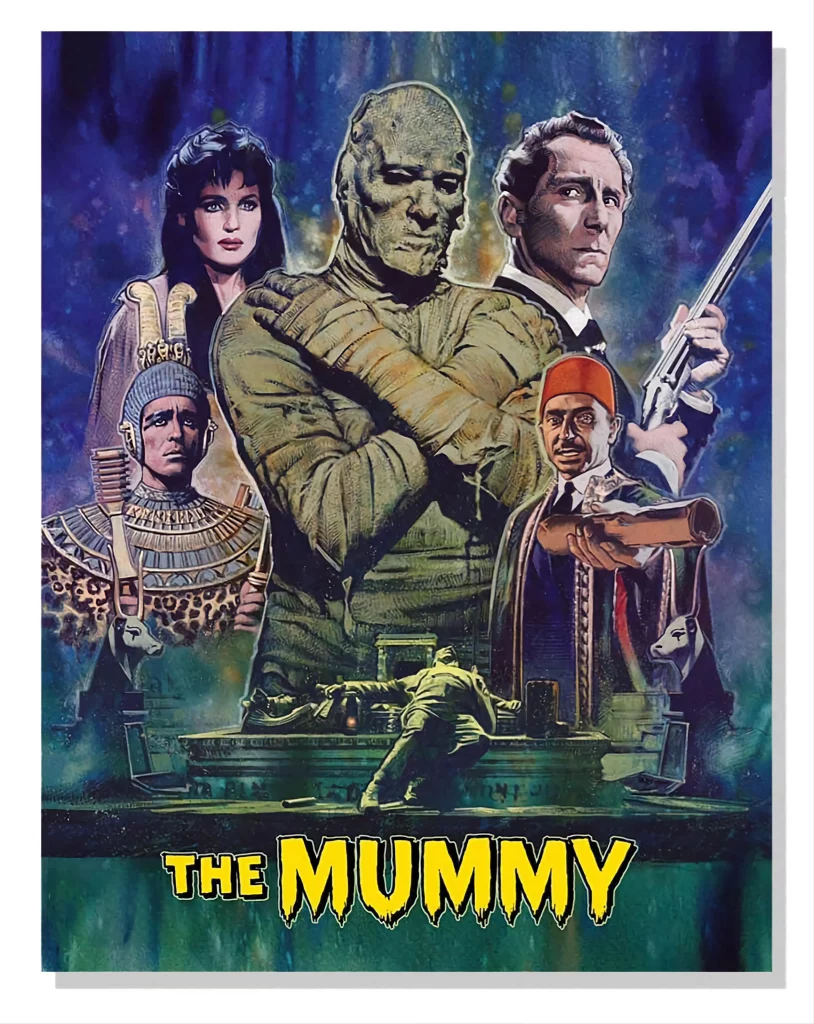
Peter Cushing (as John Banning) and Christopher Lee (as the mummy) were no strangers to Hammer Films, each staring in over 20 of the UK productions during their careers. They often switched roles between hero and villain and jumped genres, having the opportunity to showcase a wide range of acting. In this film we see Cushing play a stoic and oh-so British Victorian Age explorer, while Lee lumbers around on screen as the bandage-bedazzled mummy. The only time we see him without the bandages it is for a cringe-worthy brownface scene, a major downside to earlier films portraying non-European cultures.
However, Lee in mummy wraps is a joy to behold—he is a man who can shamble! There is an otherworldly presence to him that is hard to ignore, especially since a lot of the camera work focuses on close-ups camera shots that focus on his intense brown eyes. In one long scene, I was captivated by the way he spastically twitched or awkwardly moved his limbs, as though muscle control was only just in his control. He certainly gives the plethora of modern zombie extras a run for their money.
It’s hard to call Cushing’s acting bad, as the knighted actor is undoubtedly of superior talent, but I was disappointed in the lack of range for the character of John Banning. Many of his scenes feel so very… British (sorry old chaps), with Banning exhibiting complete stoicism and failing to even react with fear from the sight of the walking mummified man. Even Isobel (Yvonne Furneaux), who becomes the source of the mummy’s attention in the classic Universal Monsters sense, appears more so calmly bewildered than frightened or enamored. The whole effect stifles the horror inherent in the story and was somewhat of a letdown. Bloodcurdling screams from ladies in distress and a messy-haired hero fighting for his life against a much stronger adversary are the stuff classic horror is made of.
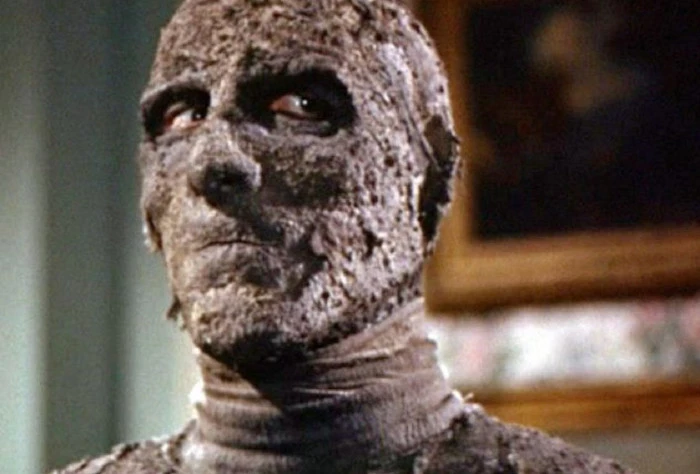
This film is blunter than other Hammer Films, lacking many of the atmospheric or macabre elements other horror films from the UK-based production company are known for. Sadly absent is the creative use of color in lighting, such as moody purples and greens or ominously red-saturated frames. In fact, much of The Mummy is over-lit, draining any semblance of mystery from the mummy itself, or overly darkened without inventive uses of shadows to lend an air of menace to our bandaged bad boy. The scene where he first rises from an English bog is incredible, but equally disappointing is the next poorly-lit nighttime scene where he just blunders off into the night, our sights drawn to his mummy butt for far too long. The whole production gives the impression of having been rushed, and all artistic considerations are thrown out the window. It’s not a bad film, but with a little of that gothic Hammer magic, it could have really been something special.
My criticisms aside, I really enjoyed watching this film. It’s impossible to watch this 1958 film and miss the influence it had on the massively popular 1999 The Mummy. Numerous mummy films have come out since the 1958 release, but the direction has largely been towards action adventure stories and not horror, which is a damn shame. There are certainly cultural considerations we take into account these days, but there is content ripe for the taking.
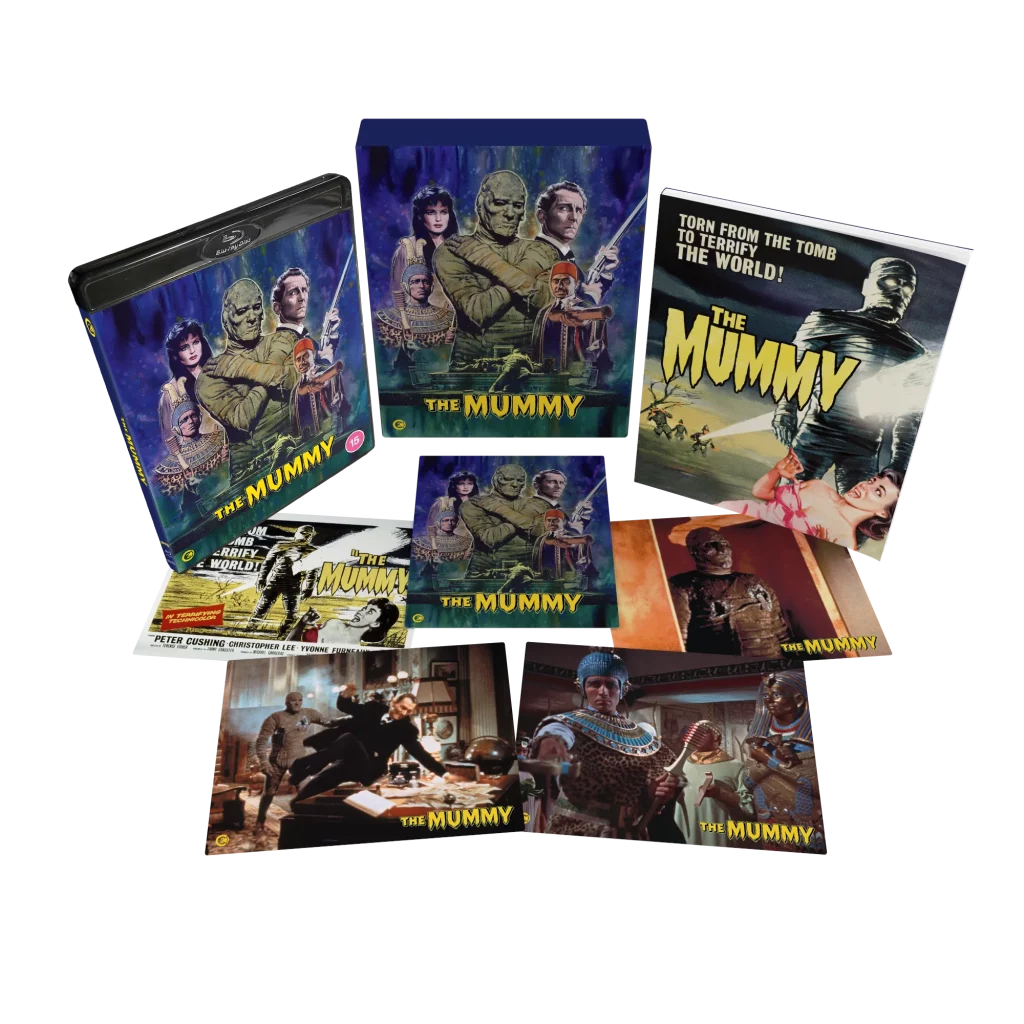
The new Second Sight Films release comes with:
- Main feature presented in original UK theatrical aspect ratio 1.66:1 and alternative full frame1.37:1
- New audio commentary by film academic Kelly Robinson
- Archive audio commentary by Marcus Hearn and Jonathan Rigby
- An Appreciation of The Mummy by David Huckvale
- The Music of The Mummy
- Unwrapping The Mummy
- The House of Horror: Memories of Bray
- The Hammer Rep Company
- Original Promo Reel
- Still Gallery
The greatest part though is the absolutely gorgeous slipcover case with new art designed by the horror art master himself, Graham Humphreys. It also includes a book of essays and 5 collectors’ art cards. Pre-order opens August 29th on the Second Sight website, found here.
More Film Reviews
Despite being one of Japan’s biggest film studios throughout the late 40s and 50s during the golden age of Japanese cinema, Daiei were struggling by the mid-60s and had to… “The reunion of two sisters after one of them has just been released from a mental institution is marred when a stay at their abandoned childhood home threatens to reveal… Chasing the dream of a breakout success YouTube video, two urban explorers think they’ve found the perfect location: An old French manor that wasn’t demolished before a lake was dammed…. There have been many horror films that tackle the theme of trauma in recent years, but this one really pushes things a bit further. Traumatika is a 2024 horror film… George Carlin has a great routine about the nature of prayer. It can’t be done justice here, though it does arrive at the conclusion that God must have an awful… Proposing itself as an intimate look at a killer, Eri’s Murder Diary caught my attention among the many titles at Japan Film Fest Hamburg. Directed by newcomer Koji Degura, I…Secrets of a House of Women (1968) Film Review – A Peek Behind the Curtain of Edo’s Red-Light District
Two Sisters Film Review – Psychological Horror Among Siblings
The Deep House (2021) Film Review – Drowned Secrets Disturbed
Traumatika (2024) Film Review – Trauma is a Disease [Frightfest]
The Righteous Film Review: Fantasia Festival 2021
Eri’s Murder Diary Film Review – The Broken Mind Of A Killer

A study in contrasts, Aubry is a lover of knitting and rescuing strays, but also most likely the one cheering loudest during gory horror scenes.
Someday she’s going to get too excited and accidentally stab herself with a knitting needle.
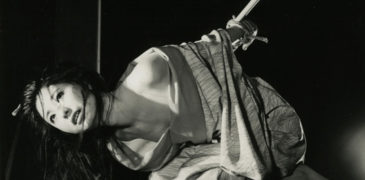

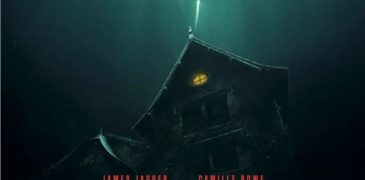
![Traumatika (2024) Film Review – Trauma is a Disease [Frightfest]](https://www.grimoireofhorror.com/wp-content/uploads/2024/07/Screenshot-2024-07-29-5.24.09-AM-365x180.png)
